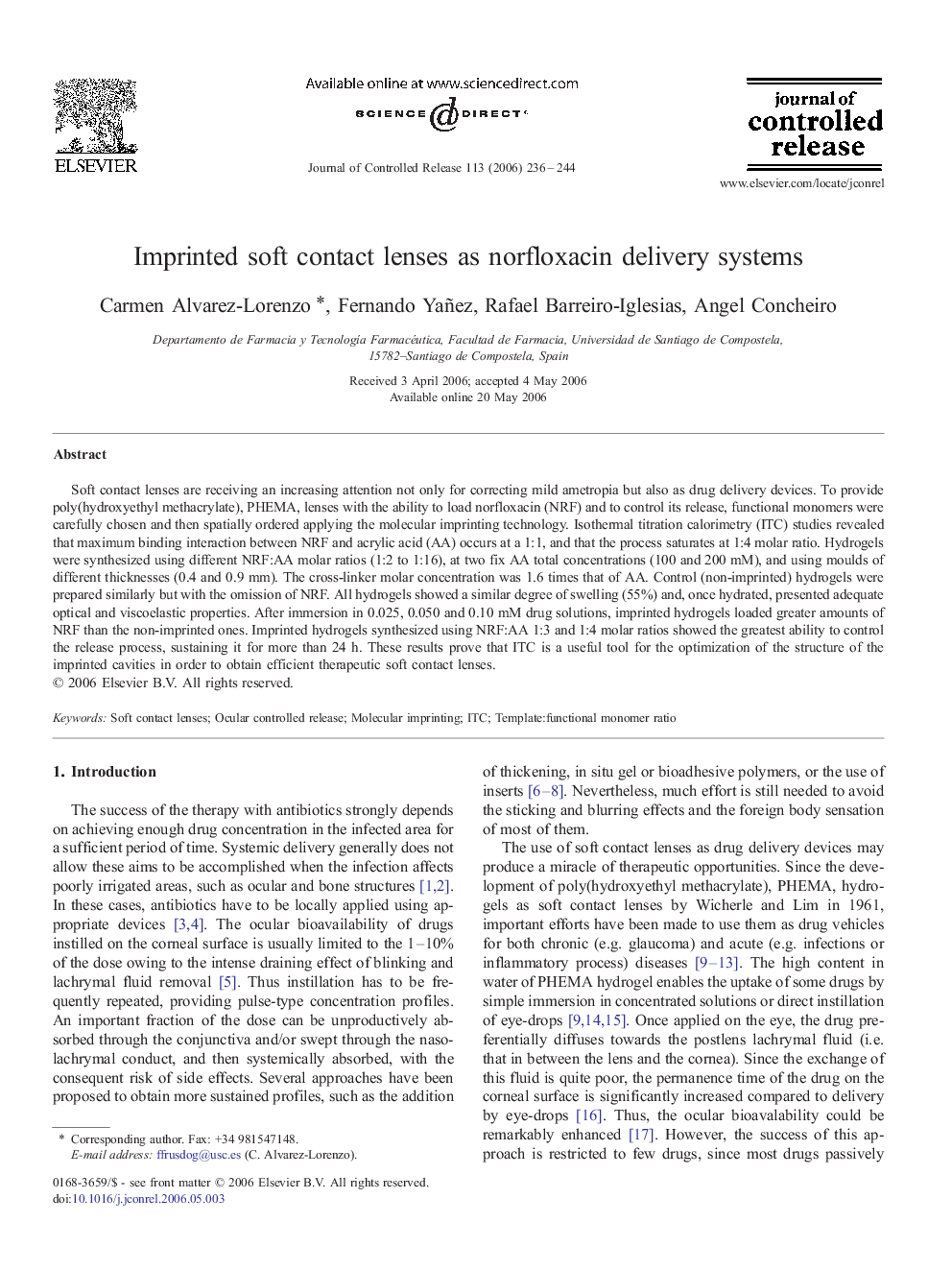| Article ID | Journal | Published Year | Pages | File Type |
|---|---|---|---|---|
| 1427532 | Journal of Controlled Release | 2006 | 9 Pages |
Soft contact lenses are receiving an increasing attention not only for correcting mild ametropia but also as drug delivery devices. To provide poly(hydroxyethyl methacrylate), PHEMA, lenses with the ability to load norfloxacin (NRF) and to control its release, functional monomers were carefully chosen and then spatially ordered applying the molecular imprinting technology. Isothermal titration calorimetry (ITC) studies revealed that maximum binding interaction between NRF and acrylic acid (AA) occurs at a 1:1, and that the process saturates at 1:4 molar ratio. Hydrogels were synthesized using different NRF:AA molar ratios (1:2 to 1:16), at two fix AA total concentrations (100 and 200 mM), and using moulds of different thicknesses (0.4 and 0.9 mm). The cross-linker molar concentration was 1.6 times that of AA. Control (non-imprinted) hydrogels were prepared similarly but with the omission of NRF. All hydrogels showed a similar degree of swelling (55%) and, once hydrated, presented adequate optical and viscoelastic properties. After immersion in 0.025, 0.050 and 0.10 mM drug solutions, imprinted hydrogels loaded greater amounts of NRF than the non-imprinted ones. Imprinted hydrogels synthesized using NRF:AA 1:3 and 1:4 molar ratios showed the greatest ability to control the release process, sustaining it for more than 24 h. These results prove that ITC is a useful tool for the optimization of the structure of the imprinted cavities in order to obtain efficient therapeutic soft contact lenses.
